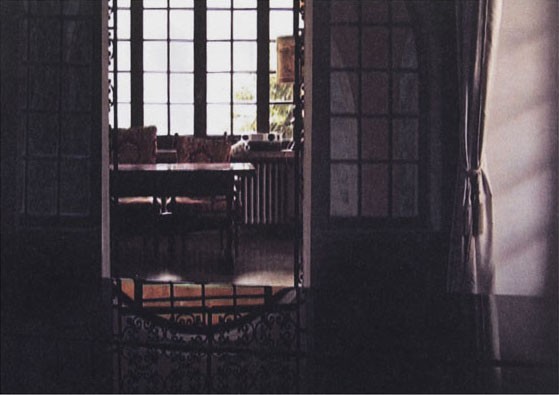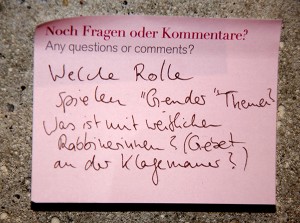An Interview with Cilly Kugelmann about the Exhibition “The Creation of the World: Illustrated Manuscripts from the Braginsky Collection”
Mirjam Wenzel: At the forthcoming exhibition, the Jewish Museum Berlin will present its first ever show of outstanding examples of the centuries-old Jewish scriptural tradition. What significance does scripture—the written word—have in the Jewish tradition?

Cilly Kugelmann and Mirjam Wenzel
© Jewish Museum Berlin, photo: Katrin Möller
Cilly Kugelmann: In early collections of rabbinic interpretations of biblical texts—the so-called midrashim—it is written that the Torah existed before the world was created. Some rabbis see the Torah quasi as a manual of creation that God drew on during his seven-day feat. Such interpretations demonstrate the extraordinary significance attributed to scripture in Judaism.
Following the loss of the geographic homeland Israel, sacrifices and pilgrimages to specific temples were abandoned in favor of prayer services that could take place anywhere—and the traditional texts themselves consequently became the most important, pivotal moment of the rite. To this day, the study and interpretation of biblical writings is the primary focus of Jewish intellectual life.
Why is René Braginsky’s Collection of illuminated manuscripts being presented under the title “The Creation of the World?” → continue reading
An Interview with Daniel Laufer
You can buy a wide variety of works of art from our art vending machine. One such piece is a postcard by Daniel Laufer (*1975, Hanover).
The card shows a film still from the video, “The Fourth Wall” (at 08:13 min). The story is based on an Hasidic parable about two men who are supposed to design one half of a house. While the first man does his work with zeal, the second delays, uninspired. The second man, who is certain that he won’t come up with a better idea than his rival, decides to coat his work with black bitumen. The material will reflect the other half of the house like a mirror. Thus he discovers a good solution to avoid defeat.

Postcard with still shot from the film “The Fourth Wall” by Daniel Laufer
© Jewish Museum Berlin, photo: Jens Ziehe
The film was shown this year at the 14th Videonale at the Bonn Art Museum.
In the following interview, Daniel Laufer talks about the genesis and message of his postcard.
Christiane Bauer: Daniel, you work mostly in video form. Yet you produced a postcard for the art vending machine. Why did you choose this format?
Daniel Laufer: A postcard is something mobile that you can take with you. It connects you to something: it provides information and contains a message. It can be a souvenir – but with a statement. And I also like the fact that you can hang it on the wall.
The original work of art is an entire film. Why did you choose this particular shot as a motif for the postcard? → continue reading
“What’s the story with women rabbis? (And prayer at the Western Wall?)”

The question of the month in the special exhibition “The Whole Truth”
© Jewish Museum Berlin, photo: Anina Falasca
Our special exhibition “The Whole Truth… everything you always wanted to know about Jews” is based on 30 questions posed to the Jewish Museum Berlin or its staff over the past few years. In the exhibition, visitors have their own opportunity to ask questions or to leave comments on post-it notes. We answer some of these questions here in our blog.
The question about the roles of men and women in Judaism is interesting because traditional notions about these roles have changed dramatically over the course of the last century. As in every religion, there are also many opinions about this issue among Jews. These correspond with the tendencies of orthodox, conservative, or liberal currents in Judaism, which – while they grapple with the same questions – come to quite different conclusions. → continue reading


